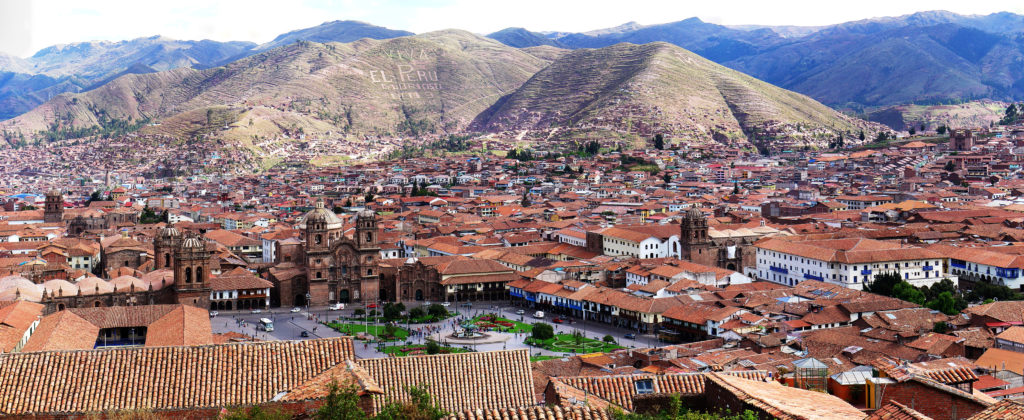
As the longest continuously-inhabited city in South America, Cuzco’s ability to uniquely blend the past with the present throughout every aspect of the city should impress any curious traveler.
Located more than 11,000 feet above sea level, high in the Andes, this vivacious city was once the center of the vast Inca Empire in the 15th and early 16th centuries. Beautifully detailed Incan stonework still accent the town’s facade, and many of the buildings standing today were constructed upon the foundations of older Incan structures. Intermixed are colonial touches brought over from the Spanish conquistadors that arrived in 1533, and more recently, the influx of modern tourism has inserted new influences from all over the world.
The Plaza de Armas has always been the center of city life. The square, framed by gorgeous colonial arcades, points to the area’s main architectural attraction: the cathedral. Red-and-white striped Peruvian flags line the streets dispersed amongst the rainbow-colored banners of Tahuantinsuyo (the Incan Empire) celebrating the collaboration of cultures that have made the city what it is today.
Throughout the town you can find a variety of restaurants, goods, local art, and entertainment. As with any major tourist destination, there are posh restaurants and up-scale hotels targeting the luxury traveller, but for those more interested in embracing the history of the area and culture of the peoples, there’s so much to explore. Spanning the walls of city, you’ll find intricate murals painted by local artists. You’ll see and smell bundles of dried peppers and garlic hanging from exposed beams. Small markets offer everything from freshly cut meats to local concoctions promising to cure everything from diabetes to gout.
You’ll also see a glimpse into the realities of the poorer population, as young children offer shoeshines in exchange for a few cents, and women serve up fried guinea pig on a stick.
As with most areas in the Andes, you cannot forget to mention the ubiquity of the coca leaf. Clear plastic bags filled with green leaves are bought and sold candidly, and you’ll regularly see men walking down the streets gnawing away at a bundle of it in their mouths. (It’s said to help with altitude sickness, and most hotels offer a tea made from the leaves because of this.)
The biggest draw for many people coming to Cuzco isn’t the city at all but the infamous Incan structure of Machu Picchu. Built in the mid 15th century, more than 850,000 tourists now visit annually. To visit, passengers hop aboard the Belmond Hiram Bingham train for a windy 68 miles through the Sacred Valley, passing through rolling plains, rivers, and Mount Veronica, before coming upon a jungle-like scenery with clouds blanketing the sky.
